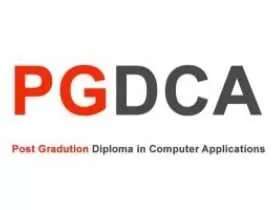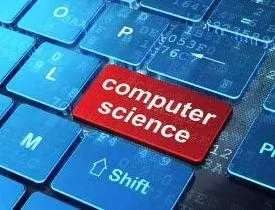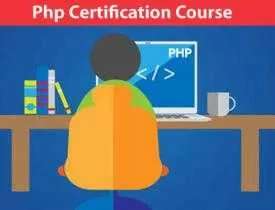Description
Course Name: Advance Diploma in Information Technology
Course Id: ACIT/Q1001
Education Qualification: 10th Pass
Duration: 370 Hrs.
How You will Get Diploma Certificate:
Step 1- Select your Course for Certification.
Step 2- Click on Enroll Now.
Step 3- Proceed to Enroll Now.
Step 4- Fill Your Billing Details and Proceed to Pay.
Step 5- You Will be Redirected to Payment Gateway, Pay Course and Exam Fee by Following Options.
Card(Debit/Credit), Wallet, Paytm, Net banking, UPI and Google pay.
Step 6- After Payment You will receive Study Material on your email id.
Step 7- After Completion of Course Study give Online Examination.
Step 8- After Online Examination you will get Diploma Certificate soft copy(Scan Copy) and Hard Copy(Original With Seal and Sign).
Step 9- After Certification you will receive Prospect Job Opportunities as per your Interest Area.
Online Examination Detail:
- Duration- 120 minutes.
- No. of Questions- 60. (Multiple Choice Questions).
- 10 Questions from each module, each carry 10 marks.
- Maximum Marks- 600, Passing Marks- 40%.
- There is no negative marking in this module.
| How Students will be Graded: | ||
| S.No. | Marks | Grade |
| 1 | 91-100 | O (Outstanding) |
| 2 | 81-90 | A (Excellent) |
| 3 | 71-80 | A (Very Good) |
| 4 | 61-70 | B (Good) |
| 5 | 51-60 | C (Average) |
| 6 | 41-50 | P (Pass) |
| 7 | 0-40 | F (Fail) |
Benefits of Certification:
- Government Authorized Assessment Agency Certification.
- Certificate Valid for Lifetime.
- Lifetime Verification of Certificate.
- Free Job Assistance as per your Interest Area.
Syllabus
Advance Diploma in Information Technology
Basics of Computer
Computer – an Overview, Operating System (Windows/Linux), Introduction to Word Processing, Introduction to Spreadsheet, Introduction to Presentations, Internet, Introduction to Computer, DOS, Operating Systems (Windows/Linux), Word Processing in detail, Spreadsheet (Excel) in Detail, Presentation in Ms-PowerPoint or Equivalent, Outlook Express, FrontPage, MS Access, System Tools, Virus, Internet & E-Commerce and Typing (Word Processing), What is a Computer, Characteristics of a Computer, Generation of computers, Introduction to the binary system, Components of a Computer, Input units, Output units.
Programming with ‘C’
An Overview of “C” Programming, Control Structures, Macro, Arrays, Pointers, Memory Allocation, Character Handling, String Handling, User Defined Data Types, Functions, Header File Creation, Storage Class, Numerators, Enumerators, File Handling, Graphics, Data Structures, Files, Introduction, Arrays, Stacks, Queues, Linked List, Tree, Searching, Sorting, Binary Search Tree, Graph, Files,Fundamentals of Programming: Built in Data Types, Constants and Variables, operators & Expressions, Assignment Statements, Conditional Statements, Iterative Statements, Record data types: Assignment on record data type, Arrays of record data types, Use of operators on record data.
Relational Database Management System (SQL)
Introduction of Database and RDBMS, Advantages and disadvantages of RDBMS, components of RDBMS, Levels of Architecture, Instance and Schemes, RDBMS facilities, Database users, Data dictionaries, Entity Relationship models, attributes, mapping constraints, aggregation, Mapping cardinalities, Entity sets and Relationship sets, Traditional Data Models, Relational Model, Relations, Normalization, Relational Algebra, Tuple Oriented Relational Calculus, Relational Database Design, Demoralization, Overview of Advanced RDBMS, Design Theory for Relational Database: E-R Model, Concept of Keys.
Computer Networking
Introduction: Goal and application Network Hardware and Software, Protocol hierarchies, Design Issue of the layers, Interfaces and services, Data Link Layer: Data Link Layer design issues, Framing, Flow control, Error Detection and Correction DLL Protocol: Stop and Wait Protocol, Sliding window protocol, A Simplex protocol for noisy channel, Medium access sub layer: Channel allocation –static and dynamic,Multiple access protocol FDDI, Data Link Layer in the Internet – SLIP,PPP, Network Layer: The Network Layer Design Issue, comparison of virtual circuits and datagram subnets, connectionless internetworking.
Visual Basic
The Integrated Development Environment, Managing Projects, Introduction to Visual Basic Language, Forms and Menus, Controls, Concepts of Objects and Classes, Visual Basic and Windows API, Graphics with Visual Basics, Event-Driven Programming, Multiple Document Interface (MDI), Programming and Interfacing with MS-Office, Data Manager and Data Controls, VB.Net Language Fundamentals, Data Types, constant and variable declarations, Operators, Built in methods ,Decision structures, Loops, Arrays manipulation in VB.Net, MDI and SDI, Dynamic Programming in VB.Net , Using Modules and Procedures, Common Controls and Application Development in VB.Net.
Desktop Publishing Using Page Maker & Web Page Design
Designing Knowledge Using Page Maker, Basic Features Of Page Maker, Working with various Tools, Working with Platte and various Templates, Positioning ruler, Typing Text, Basic Formatting , Working with Various Graphics, Positioning, Logo, Using Corel draw Design In Ventura, PageMaker Through Export, Creating and Opening Publication, Changing and Modifying Design, Introduction to various versions, concepts and applications of PageMaker, Basic web designing: Introduction to web browser, architecture of web browser, web page, static & dynamic web pages, home page, web-site, Creating WEB Application: ASP.NET Tools, Advanced Tools & Features, User Interface, Creating Master Pages, Creating Web Pages, User Controls, Data Binding Controls, Query String, and Session State.






